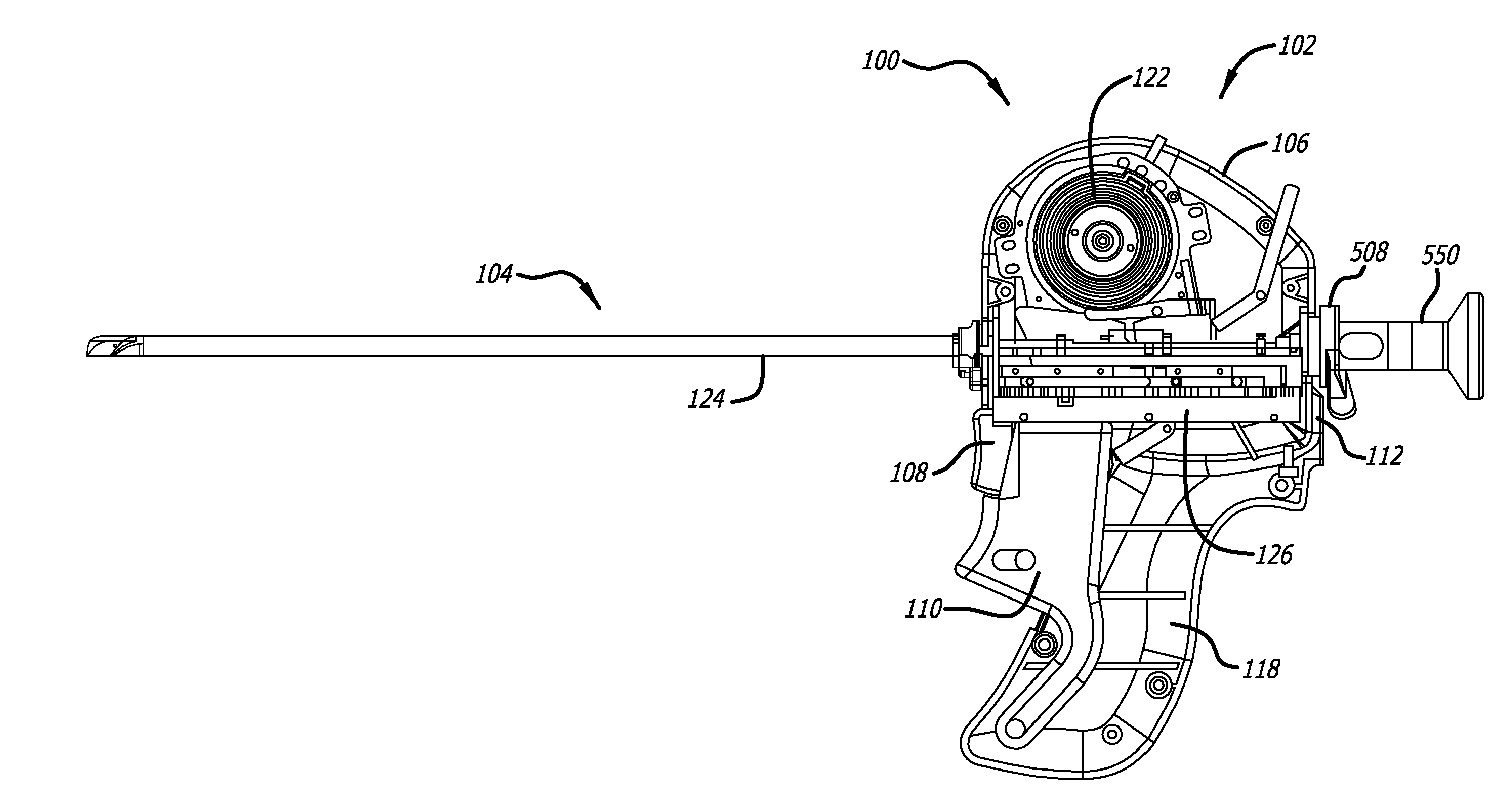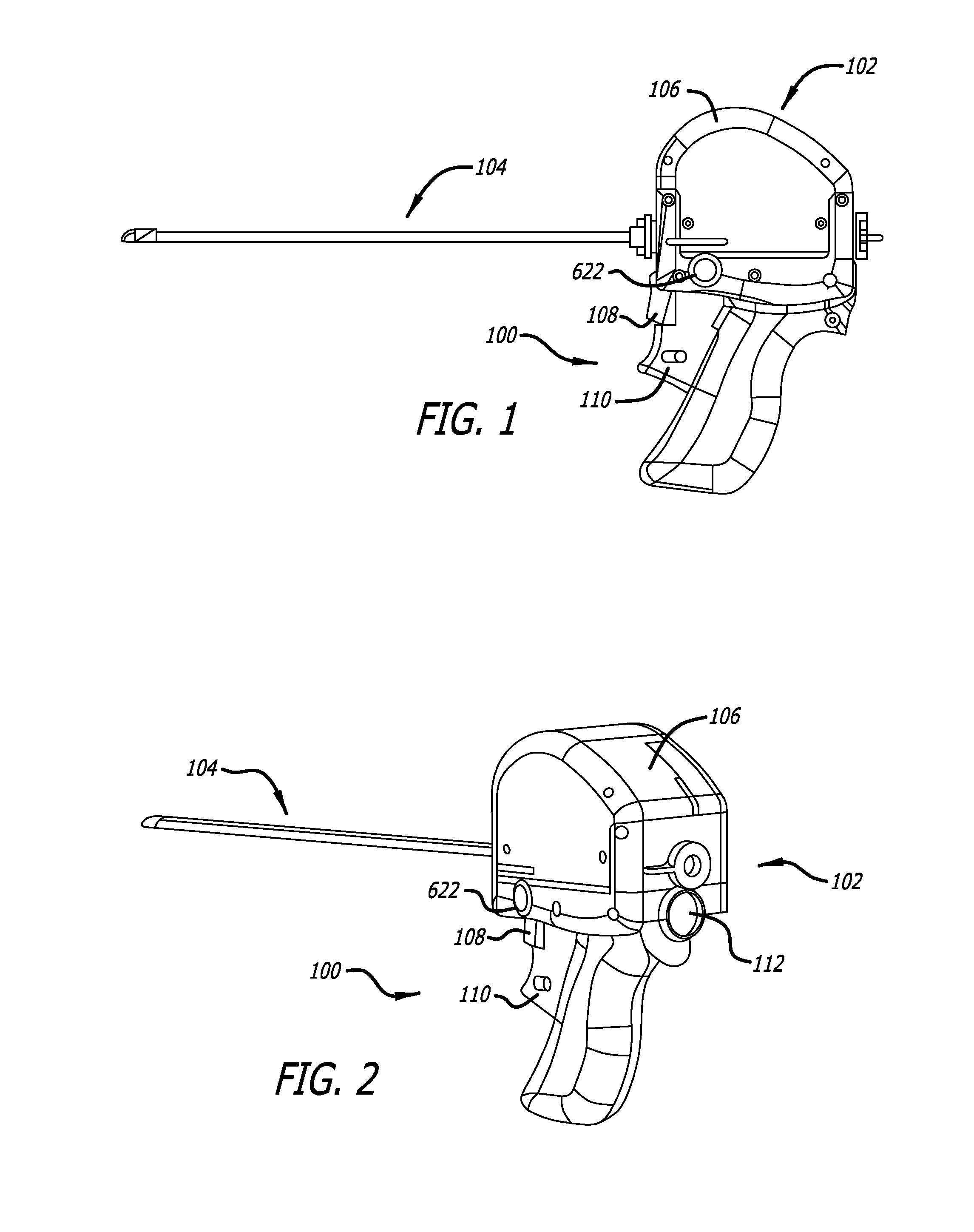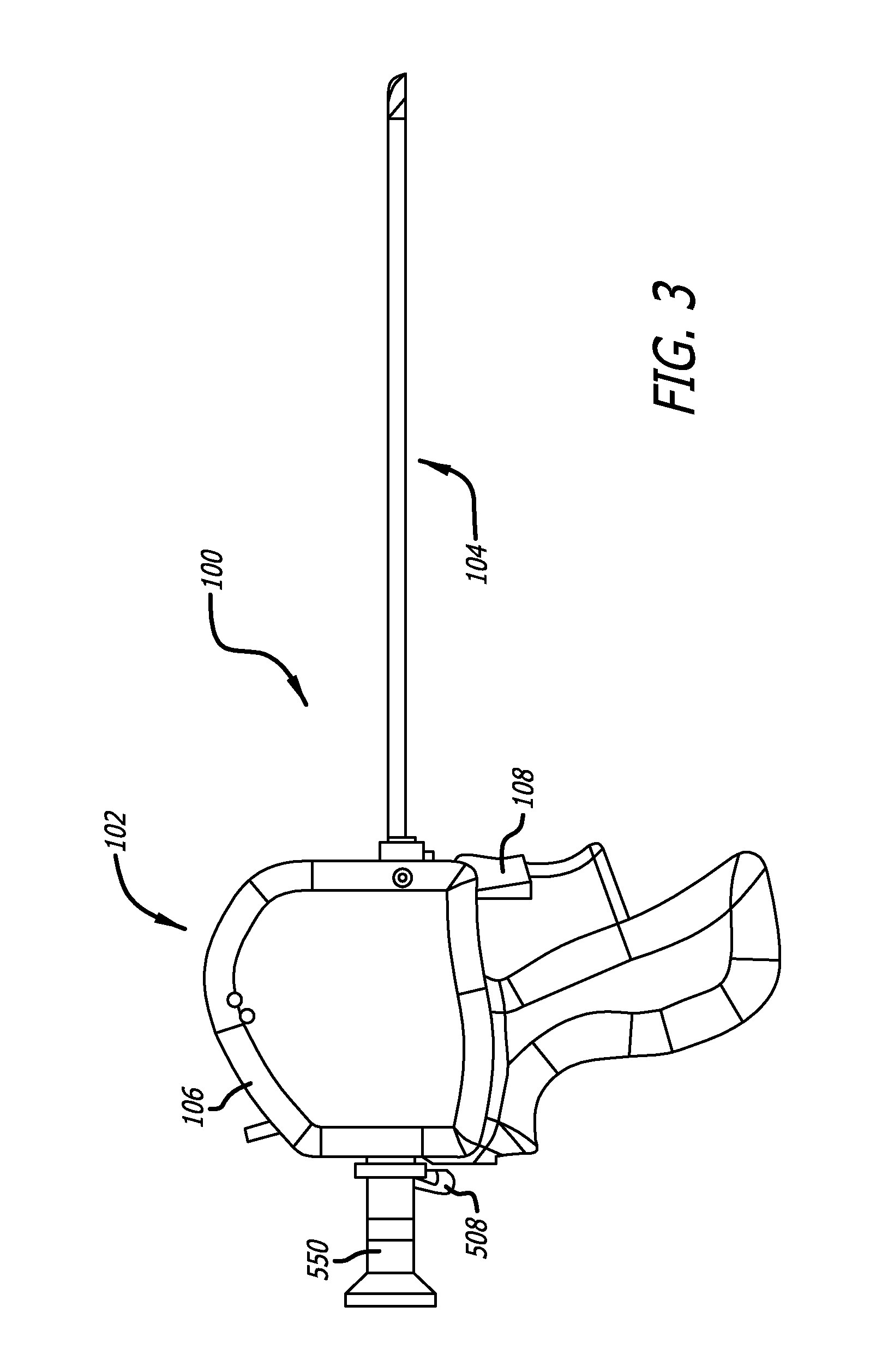Anchor delivery system with replaceable cartridge
a technology of replaceable cartridges and anchors, applied in the field of medical devices and methods, can solve the problems of laborious surgical dissection, the most effective current method of treating bph carry a high so as to achieve convenient and reliable anchor seating, reduce the risk of adverse effects, and reduce the risk of surgical dissection.
- Summary
- Abstract
- Description
- Claims
- Application Information
AI Technical Summary
Benefits of technology
Problems solved by technology
Method used
Image
Examples
Embodiment Construction
[0107]Turning now to the figures, which are provided by way of example and not limitation, the present disclosure is directed to a device configured to deliver anchor assemblies within a patient's body. As stated, the disclosed apparatus can be employed for various medical purposes including but not limited to retracting, lifting, compressing, approximating, supporting or repositioning tissues, organs, anatomical structures, grafts or other material found within a patient's body. Such tissue manipulation is intended to facilitate the treatment of diseases or disorders. Moreover, the disclosed invention has applications in cosmetic or reconstruction purposes or in areas relating the development or research of medical treatments.
[0108]In one particular aspect, the anchor assembly of the present disclosure is contemplated to be formed of a structure which is visible by ultrasound. Accordingly, the anchor assembly can be viewed during ultrasonic body scans such as during normal trans-re...
PUM
 Login to View More
Login to View More Abstract
Description
Claims
Application Information
 Login to View More
Login to View More - R&D
- Intellectual Property
- Life Sciences
- Materials
- Tech Scout
- Unparalleled Data Quality
- Higher Quality Content
- 60% Fewer Hallucinations
Browse by: Latest US Patents, China's latest patents, Technical Efficacy Thesaurus, Application Domain, Technology Topic, Popular Technical Reports.
© 2025 PatSnap. All rights reserved.Legal|Privacy policy|Modern Slavery Act Transparency Statement|Sitemap|About US| Contact US: help@patsnap.com



